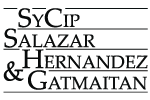Bridging the Gap: Enhanced Basic Education through K-12
Much debate accompanied the passage of the law. Primarily, the statute mandates the incorporation of two more years of high school to our basic ten-year education cycle. Critics say the added two years translate only to a financial burden to parents who can barely afford to send their children to school, to say nothing of how it fails to accurately address the lack of quality education in the country. Proponents, on the other hand, suggest that the added time will allow students to learn their lessons with mastery, thereby ensuring their global competitiveness in the long run. Wherever the debates may lead, the passage of the law urges us to look forward and observe how the new law might create for us new gains in employment and socio-economic growth. The first batch of students to begin the K-12 cycle will finish the full program in 2024. (See http://www.gov.ph/k-12/#Features)
The Enhanced Basic Education Act establishes the Enhanced Basic Education Program, which espouses the following objectives: (1) give every student an opportunity to receive quality education that is globally competitive based on pedagogically sound curriculum that is at par with international standards, (2) broaden the goals of high school education for college preparation, vocational and technical career opportunities as well as creative arts, sports and entrepreneurial employment in a rapidly changing and increasingly globalized environment, and (3) make education learner-oriented and responsive to the needs, cognitive and cultural capacity, the circumstances and diversity of learners, schools and communities through the appropriate languages of teaching and learning, including the mother tongue as a learning resource (Sec. 2).
The Enhanced Basic Education Program encompasses at least one (1) year of kindergarten education, six (6) years of elementary education, and six (6) years of secondary education. Secondary education includes four (4) years of junior high school and two (2) years of senior high school education (Sec. 4). The program shall be supported by and implemented through an enhanced basic education curriculum which the DepEd shall formulate alongside the Commission on Higher Education (CHED) and the Technical Education and Skills Development Authority (TESDA), in consultation with other national agencies and stakeholders including the Department of Labor and Employment, the Professional Regulation Commission, private and public schools associations, national student organizations, national teacher organizations, parents-teachers associations and chambers of commerce (Sec. 5).
The Enhanced Basic Education Act offers the following salient features:
Mother-Tongue Based Multi-Lingual Education. Language is recognized to play a strategic role in shaping the formative years of learners; hence, basic education is to be taught in languages understood by the students. For kindergarten and the first three (3) years of elementary education, instruction, teaching materials and assessments is to be given and made in the regional or native language of the learners. The DepEd will formulate a mother language transition program from Grade 4 to Grade 6 so that Filipino and English will gradually be introduced as languages of instruction until such time when the two (2) languages can become the primary languages of instruction at the secondary level (Sec. 4). Twelve mother tongue languages have been introduced for SY 2012-2013, namely: Bahasa Sug, Bikol, Cebuano, Chabacano, Hiligaynon, Iloko, Kapampangan, Maguindanaoan, Meranao, Pangasinense, Tagalog, and Waray. (See http://www.gov.ph/k-12/#Features)
Specialized Upper Secondary Education. The law mandates that the enhanced basic education curriculum shall be designed to ensure the global competitiveness and college readiness of Filipino graduates (Sec. 5). In this regard, students in their senior year of high school are allowed to choose a specialization based on their interests, aptitude, and school capacity. Their choice of career tracks will determine the content of their subjects taken in Grades 11 and 12. A student can choose among three tracks: (1) Academic, (2) Technical-Vocation-Livelihood, and (3) Sports and Arts. The Academic track includes three strands: (a) Business, Accountancy, Management; (b) Humanities, Education, Social Sciences; and (c) Science, Technology, Engineering, Mathematics. (See http://www.gov.ph/k-12/#Features) After finishing a Technical-Vocational-Livelihood track in Grade 12, a student may obtain a National Certificate Level II (NC II) from TESDA, provided he passes the competency-based assessment of the agency. Such a certificate improves his employability in fields like Agriculture, Electronics, and Trade. (See http://www.gov.ph/k-12/#Features)
To properly guide the students in choosing their chosen career tracks, the DepEd, in coordination with TESDA and CHED, shall regularly conduct career advocacy activities for secondary level students (Sec. 9).
Teacher Training and Hiring
Current DepEd teachers will be retrained to meet the content and performance standards of the new K-12 curriculum. Superintendents, principals, subject area coordinators and other instructional school leaders will likewise be made to undergo training on school leadership (Sec. 7).
Significantly, the law also allows the hiring of non-licensed teachers as part-time teachers in high school. Should they choose to teach full time, graduates of science, mathematics, statistics engineering, music and other degree courses with shortages in qualified Licensure Examination for Teachers (LET) applicants, may teach in their specialized subjects in the elementary and secondary education, provided that they pass the LET within five years from their date of hiring (Sec. 8(a)). The DepEd and private institutions may also hire graduates of technical-vocational courses to teach in their specialized subjects in secondary education, provided, these graduates possess the necessary certification issued by TESDA (Sec. 8(b)).
All in all, the new law seeks to bridge our basic education with, ultimately, employment in the globalized world. It does this by harnessing language to improve the way we learn, and by maximizing time spent in secondary education to equip us with skills for the careers we choose. The implementation of the new law may be expensive, what with the need to build more classrooms and train more teachers to accommodate two more years of basic education, but it is about time that we invest heavily in education, if we should invest in the future of our country at all.
(Ricky Ongkiko and Tracy Anne A. Ong co-authored this post.)


 Post a comment
Post a comment Print article
Print article

